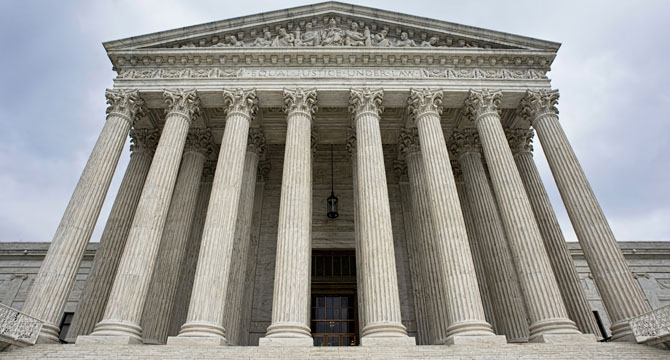Supreme Court Bars Structured Dismissals of Bankruptcy Cases That Violate the Code’s Priority Distribution Scheme – Could it Affect Your Creditor Position?

On March 22, 2017 the Supreme Court issued its long-awaited ruling regarding the legality of structured dismissals of Chapter 11 bankruptcy cases that would make final distributions of estate assets to creditors in a manner that deviates from the Bankruptcy Code’s statutory priority distribution scheme.1 In Czyzewski v. Jevic Holding Corp., the Court held that such a structured dismissal was forbidden, absent the consent of the negatively affected parties. However, the Court did not bar all distributions of estate assets which violate the priority distribution scheme, suggesting that interim distributions that serve a broader Code objective such as enhancing the chances of a successful reorganization might be allowed, meaning that important bankruptcy tools like critical vendor orders and first-day employee wage orders are still viable.
In Jevic, the debtor was taken over by an investor in a leveraged buy-out (“LBO”), with money borrowed from a bank. The LBO added a significant and ultimately unsustainable level of the debt to the company. Shortly before the bankruptcy, Jevic ceased operations and fired all of its employees. A group of those laid-off employees (the truck drivers) filed a lawsuit against Jevic and the investor for violations of the federal WARN Act.2 The employees prevailed in the WARN Act litigation against Jevic and obtained a $12.4 million judgment, $8.3 million of which was entitled to priority status in Jevic’s bankruptcy case because it was for wages. As the holders of a priority claim, the truck drivers were entitled to be paid before any of the general unsecured creditors in the Jevic bankruptcy. The employees also had a WARN Act claim pending against the investor, the acquirer in the LBO. During the bankruptcy, the unsecured creditors’ committee sued the investor and the bank for fraudulent transfer claims arising from the LBO. While those cases were pending, and during the bankruptcy, several constituencies attempted to negotiate a resolution to the case with a plan of reorganization, but that effort failed. Ultimately everyone but the truck drivers agreed to a settlement regarding the fraudulent transfer claims and distribution of estate property and a structured dismissal of the bankruptcy case.3 The settlement excluded the truck drivers from any recovery, but did provide some recovery to consenting lower-priority unsecured creditors.
The truck drivers and the United States Trustee objected to the structured dismissal since it deviated from the Code’s priority rules. However the Bankruptcy Court approved it, and was affirmed by both the District Court and the Third Circuit Court of Appeals. Those courts reasoned that under the settlement and structured dismissal, there would be at least some recovery to some priority and general unsecured creditors—even if not to the bypassed truck drivers—whereas otherwise no one but the secured creditor would get anything.. The truck drivers could not really complain, those courts concluded, because they would have gotten nothing regardless. Furthermore, those courts did not believe that the absolute priority rule applied to a dismissal.
The Supreme Court, however, reversed the Third Circuit Court of Appeals, and concluded that in a final distribution of estate assets, by whatever mechanism, the Code’s priority rules must be respected, absent the consent of adversely affected parties.
However, the Court narrowly tailored its ruling, stating that strict compliance with the priority rules is only required in a final distribution of estate assets upon the conclusion of the bankruptcy case, whether via liquidation, plan confirmation, sale of assets, or dismissal. The Court noted that during a reorganization case, bankruptcy courts routinely approve interim distributions of estate assets in ways that violate the priority distribution scheme. For example, in almost every chapter 11 case, debtors seek the ability to pay their employees for pre-petition wages that are accrued but unpaid on the petition date. In some cases, debtors also seek critical vendor orders that allow them to pay certain key suppliers the pre-petition amounts due so that those suppliers will continue to ship goods or provide services during the bankruptcy case. The Court distinguished these interim priority-violating distributions from the one at issue in Jevic because the interim distributions served the goal of the bankruptcy system: the rehabilitation of debtors. Priority-violating final distributions made pursuant to structured dismissals do not serve that goal.
Jevic’s ruling will drastically curtail the growing trend of structured dismissals, eliminating some wiggle room bankruptcy stakeholders had in fashioning a resolution to a case outside a plan of reorganization. No longer can recalcitrant groups of creditors be threatened with being squeezed out of any distribution if they won’t cave in and agree to play ball; they can insist on their priority rights. However, the ruling still preserves the flexibility that has developed in chapter 11 cases to allow debtors to attempt to reorganize their business and protect parties that are willing to work with debtors during the bankruptcy.
—————————–
1 Czyzewski v. Jevic Holding Corp., 580 U.S. ___ (2017); 2017 WL 1066259.
2 The WARN Act is the Worker Adjustment and Retraining Notification Act. Among other things, the WARN Act requires companies to give workers facing a mass layoff at least 60 days’ notice of the layoff, or pay their wages for the 60 day period. 29 U.S.C. 2102.
3 The truck drivers were excluded because they would not agree to drop their WARN Act claims against the investor, who was a party to the settlement.

